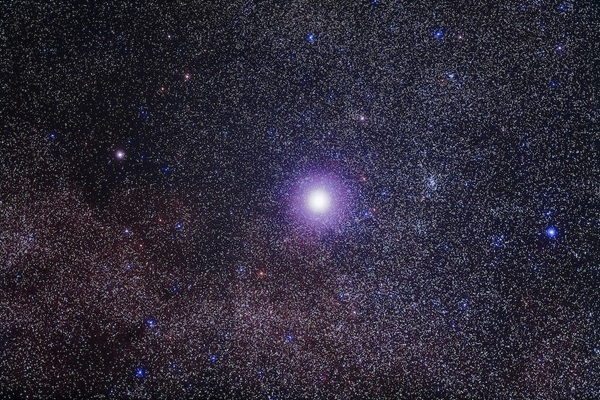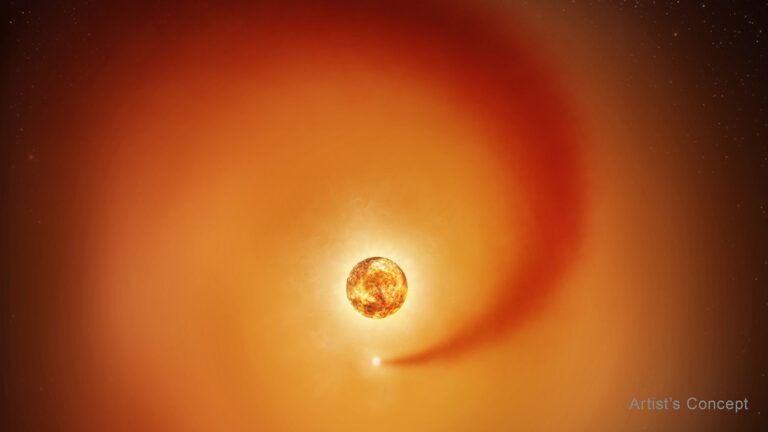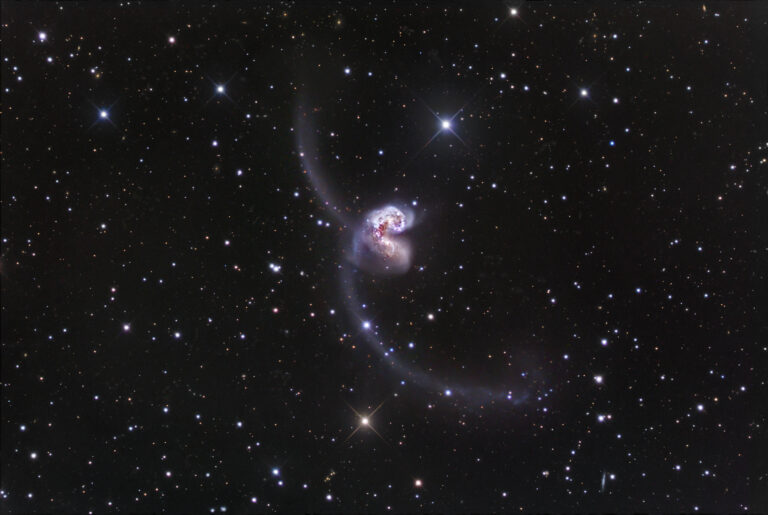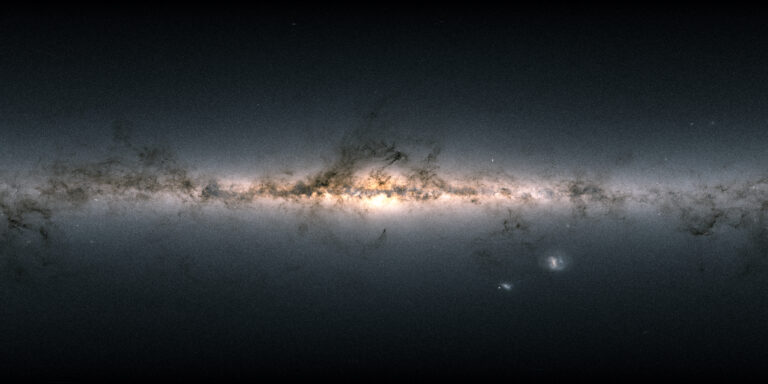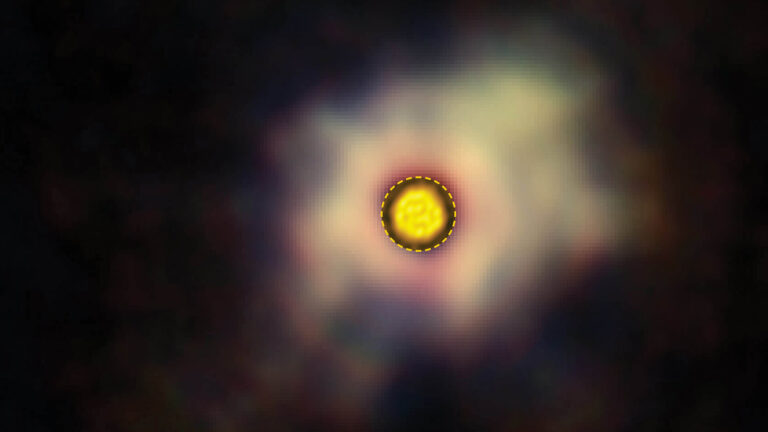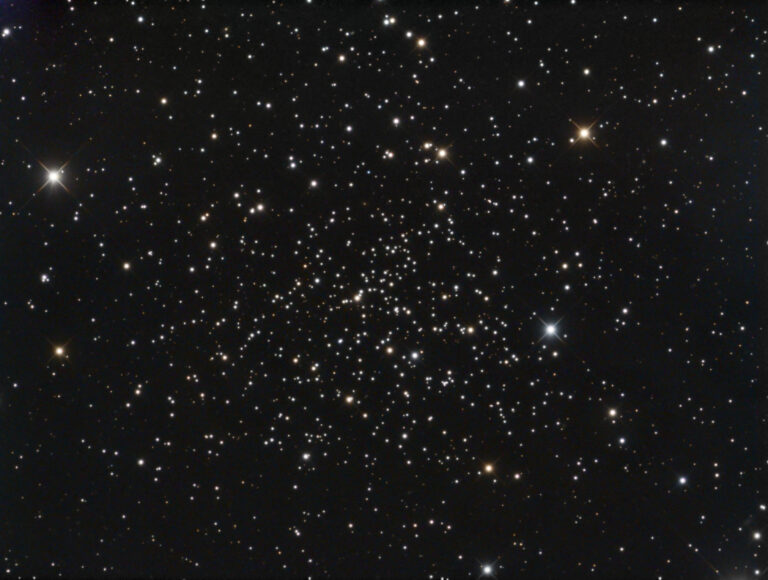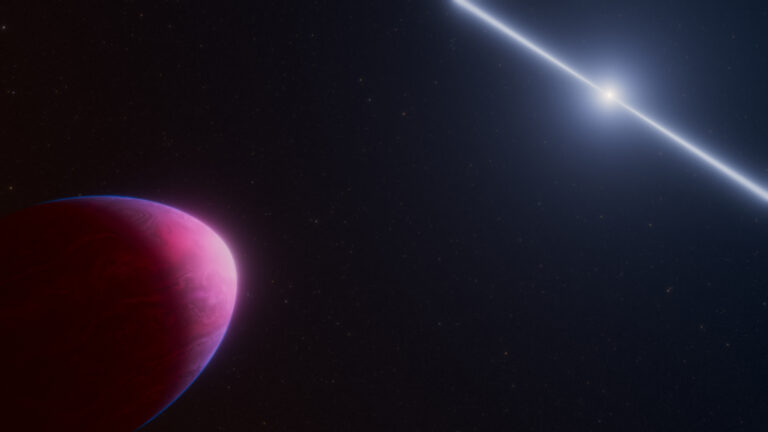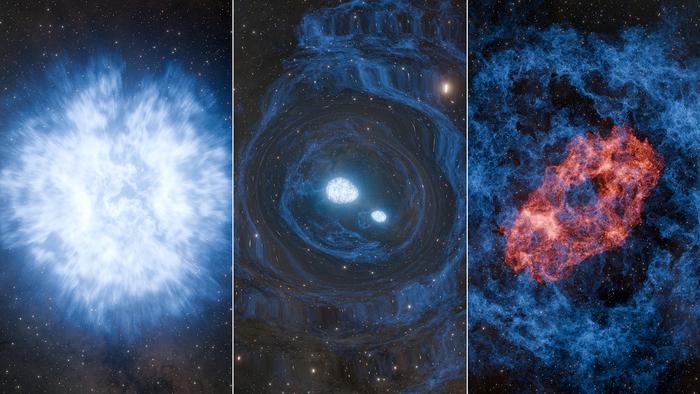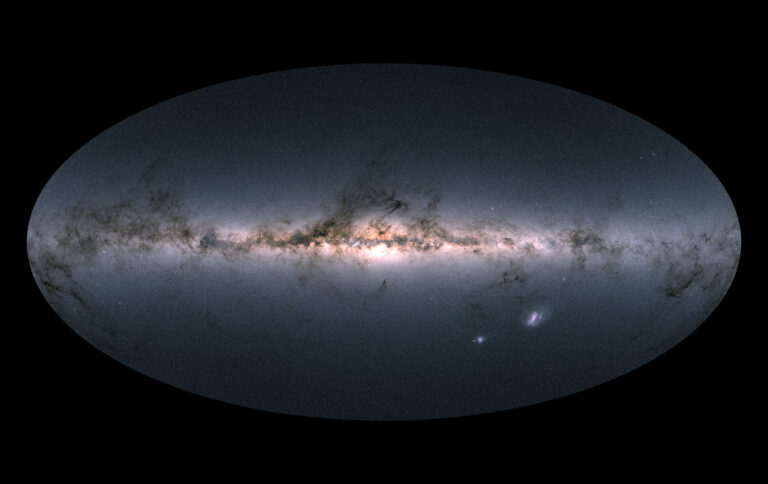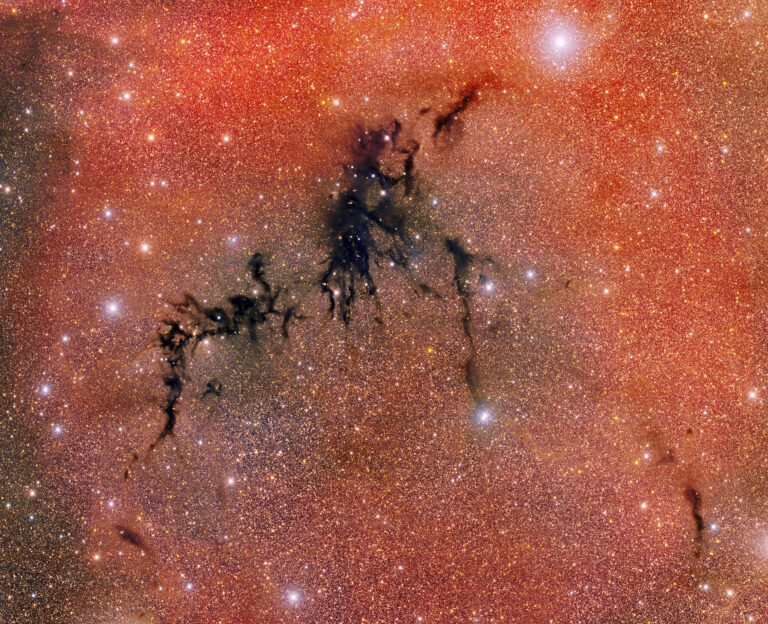Key Takeaways:
The third-brightest star in the sky, Alpha (α) Centauri, gleams in the southern constellation Centaurus. Since it is positioned at a declination of almost –61°, only stargazers located south of latitude 29° have any hope of seeing it. But those who can will never forget their first glimpse. Proximity is the main reason this star, also known as Rigel Kentaurus, appears so bright in our sky. At just 4.37 light-years away, it’s our nearest stellar neighbor.
When we look at Alpha Centauri, we’re not seeing a single star, but a triple-sun system. The biggest and brightest member of this stellar family, shining at magnitude 0, is Alpha Centauri A, a type G main sequence star like the Sun. Alpha Centauri B, an orange type K star, glows at magnitude 1.3 and orbits A once every 79.9 years. Their apparent separation varies from just 2″ to 22″ throughout each orbit. The stars are now slowly creeping closer to one another as seen from Earth, having passed their maximum separation, or apastron, in 1995. Their next closest approach, or periastron, is in 2035.
At 4.24 light-years distant, the third star in the system, Proxima Centauri, is slightly closer to us than the other two. But being a tiny red dwarf star, Proxima is far fainter than our naked eyes can detect. It shines at only magnitude 10.4, appearing as a dim red speck about 2° southwest of the brighter Alpha pair.
However, in 2016, Proxima outshone both Alphas in the news when astronomers announced the discovery of an extrasolar planet orbiting the petite sun. Dubbed Proxima Centauri b, it’s about 25 percent more massive than Earth. And even though its orbit is equivalent to about one-eighth the distance between Mercury and the Sun, it resides within Proxima’s habitable zone, where liquid water could exist on the planet’s surface. Still, odds of life spawning there are considered slim. Proxima sometimes produces massive flares, bathing the planet’s surface in lethal levels of radiation.
A second planet, Proxima Centauri c, was discovered four years later. It is about seven times the mass of Earth and orbits outside Proxima’s habitable zone.
Make sure to explore Astronomy’s full list of 101 cosmic objects you must see. New entries will be added each week throughout 2022.
To get the latest astronomical news and observing content delivered directly to your door, subscribe to Astronomy magazine today!

